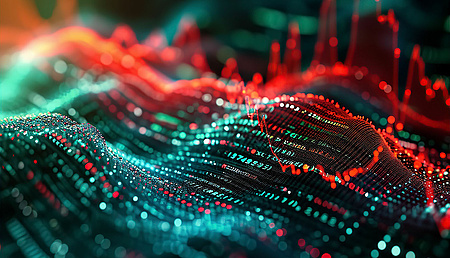
The future of IP: Top 10 changes to expect in the next decade
Remarkable technological and cultural transformations have impacted Intellectual Property rights management during the past 25 years and many experts agree, IP legal practices are not keeping up with today's technologies. Examining how the industry will adapt over the next decade, ten key changes will have a significant influence on IP practices.
1. Global vs. National IP
During the last 50 years, policies and treaties have focused on global, rather than national IP protection. The Madrid Protocol, ICANN's UDRP process, WIPO's Patent Cooperation Treaty, and the European Union's Intellectual Property Directives, are just a few examples. They all aim to facilitate the global protection of Intellectual Property rights (IPRs) in a world where businesses are not constrained by national borders, but global protection is hampered by high costs and uncertainty. For IPR holders, this raises potential risks.
Stronger IP protection will help to develop the global economy and increase international cooperation among nations. In this context, owners of IP rights will have to plan for global protection. However, global protection brings additional expenses. There are significant risks of out-pricing smaller businesses and individuals from obtaining full protection of their IPRs.
In addition, global protection is complex and uncertain. International IP treaties don't cover everything and in cases like the TRIPS agreement, will barely bring harmonization to national laws. Lucas Osborn, in the Campbell University Law Review, notes "TRIPS brings some harmonization, but it does not bring uniformity. This leaves additional room for uncertainty, but perhaps the benefits outweigh the costs. Suffice to say that the tension between certainty and flexibility will exist for some time to come."
2. Data-driven IP
The development of artificial intelligence (AI) will improve IP practices during the next decade by assessing the value of IPRs, evaluating the performance of patent prosecution with the help of algorithms, improving predictability and cutting costs for IPR owners. Algorithms can also be "trained" to analyze and manage IP portfolios, making them more cost-efficient and error free. This is especially true in the area of patent prosecution and filing, where the costs are traditionally higher.
Simultaneously, the use of AI will inevitably generate new questions as systems become more sophisticated and creative. Courts and legislators will have to address the place of machine-created inventions in IP. As it stands in the United States, patentable inventions must be the product of human intellect. Under these circumstances, will the status quo remain unchanged? The next ten years will address this conundrum.
3. Common law terms and technological advancements
In the United States, reliance on common law doctrines is a necessary part of IP practice. However, with the advent of the internet, many of these common law terms are no longer consistent with technological norms. For example, copyright law reserves the right to reproduce a work to the owner. The doctrine of exhaustion, one of the oldest common law copyright doctrines, states that the copyright owner's rights are exhausted upon the first sale of the protected item. However, purchases of works over the internet nearly eliminates the first sale defense; as purchasers have rights to use and resell the copyrighted work. (ReDigi Inc. v. Capitol Records, LLC, 2019 WL 2121701, U.S.). Incongruity in results is inevitable as technology and IP merge, forcing practitioners to seek legislation that will resolve these issues.

4. The trademark arena will become even more crowded
The trademark arena is already crowded and obtaining strong global protection is becoming nearly impossible, especially with trademark registrations at an all-time high. Brand owners may see more hurdles to registration due to the likelihood of confusion with already registered marks. Because of this, practitioners must be well versed in strategies for unique applications to increase their chances of success.
During the next 10 years, trademark practitioners will be confronted with this ever-increasing frustration, and the outcome is unclear. In the article, "Are We Running Out of Trademarks? An Empirical Study of Trademark Depletion and Congestion," Barton Beebe and Jeanne Fromer commented that "the supplies of word marks that are at least reasonably competitively effective as trademarks are finite and exhaustible. This supply is already severely depleted, particularly in certain sectors of the economy, and levels of depletion continue to rise. Those marks that are registered are growing increasingly congested. The result, as the data reveals, is that new trademark applicants are increasingly being forced to resort to second-best, less competitive marks, and the trademark system is growing increasingly—perhaps inordinately—crowded, noisy, and complex." The authors also suggest heightening the use requirements for registered marks, secondary meaning requirements for new marks and taking into account the crowded field during litigations. They also state that these solutions are only usable if everyone can first agree that the trademark supply is finite.
5. Mass expiration of copyright
For the first time in 20 years, there is a mass expiration of copyrights in the US and as a result, practitioners expect to see significant litigation. The Sonny Bono Copyright Term extension of 1998, at the urging of the Disney Corporation, prolonged the copyright term for works made in 1923 or later. This effectively froze copyright protection, pushing the nearest expiration date to 2019 and consequently nothing has entered the public domain since 1998. There's no doubt that corporations who rely on older copyrighted materials will again push for extensions on copyright (Mickey Mouse's first appearance is set to expire in 2024).
6. European Directive on Copyright in the Digital Single Market
The European Union's newest copyright directive was approved on April 15, 2019, giving EU members two years to implement new measures that will in part address the effects of globalization and technology on IP law. This directive is an attempt to harmonize copyright across the EU's member states and could signal a greater international effort for harmonization. Andre Koch, a Dennemeyer expert on copyright, says "much will depend on the actual implementation by member states, later by market participants and by courts of law."
7. Omni-IP management
Like the use of big data, the integration of technology into practice will become the norm in the coming decade. Intelligent software will be a standard tool used to conduct business in a fraction of the time that it currently takes an attorney. While it may not replace the expertise that an attorney brings, machines and algorithms will soon conduct a variety of functions including searching for infringing material and preparing patent applications. It is unlikely that AI will replace the need for an IP attorney because of the human element. Creativity is a product of the human mind, but machine learning is improving rapidly and the very technology that enhances a lawyers value, could ultimately replace some of them.
8. Client interaction
The interaction between attorneys and their clients is vastly different from what it was 20 years ago. Thanks to the multitude of new communication methods and devices, attorneys and clients no longer need to travel to see each other. In fact, they may never even meet, while still benefiting from the relationship. Advances in technology allow clients to choose attorneys, interact with them, and complete the necessary legal work from a distance. In 10 years, communications technology will have advanced to a point where meeting in person will be dis-incentivized.
9. The end of plagiarism
Artificial intelligence, software and technology have made it possible to tailor-fit products for the desired audience. This trend will eventually shorten completion times and answer previous concerns about inventions created through machine learning. Ten years from now, machine-created artwork and designs will become more commonplace.
10. Maximizing portfolio value and the evolving role of attorneys
In the last 50 years, intangible assets have grown to account for 80% of most companies' valuation and over 35% of the United States economy, with expectations for continued growth. As such, practitioners should enact strategies for growing their portfolios and shifting IP management toward exploiting profit opportunities, rather than solely being a protective mechanism. Practitioners will have to take on a dual role of providing legal advice as well as portfolio management services to deliver the highest level of service. The internet has made this increasingly difficult, where non-attorney services offer a more inexpensive do-it-yourself model. These services, unless curtailed, will force law firms to evolve as the non-attorney services continue to grow.

What are the three pillars of IP innovation, and how can C-suite members maximize the value of assets that are, by definition, less than concrete?



